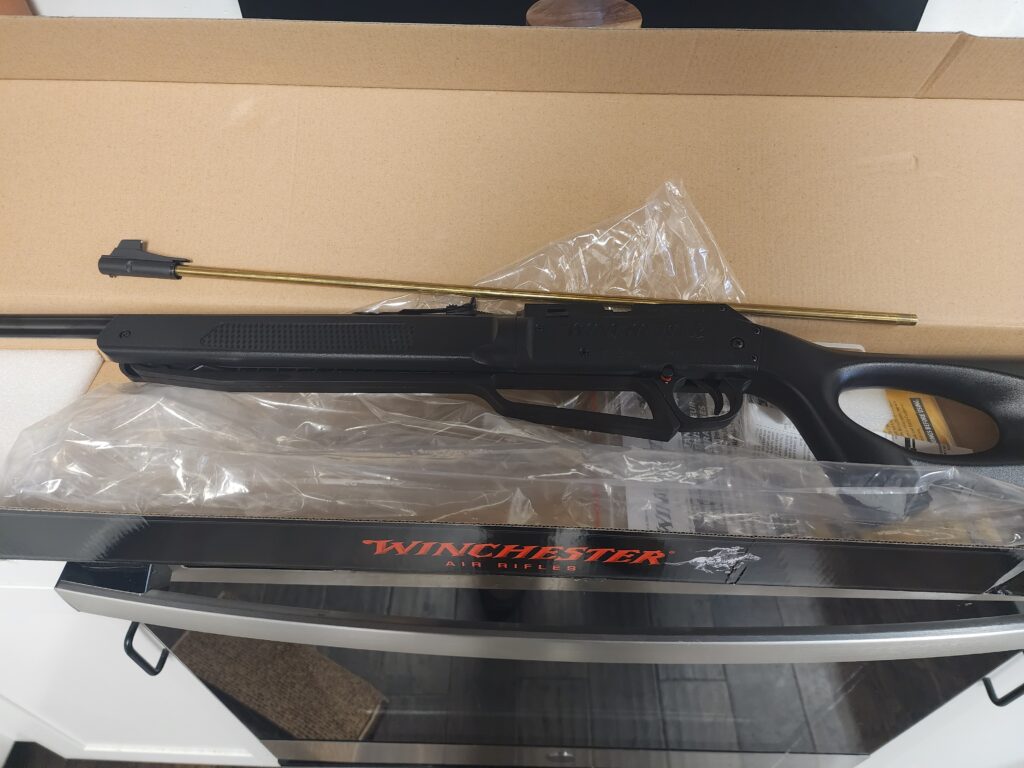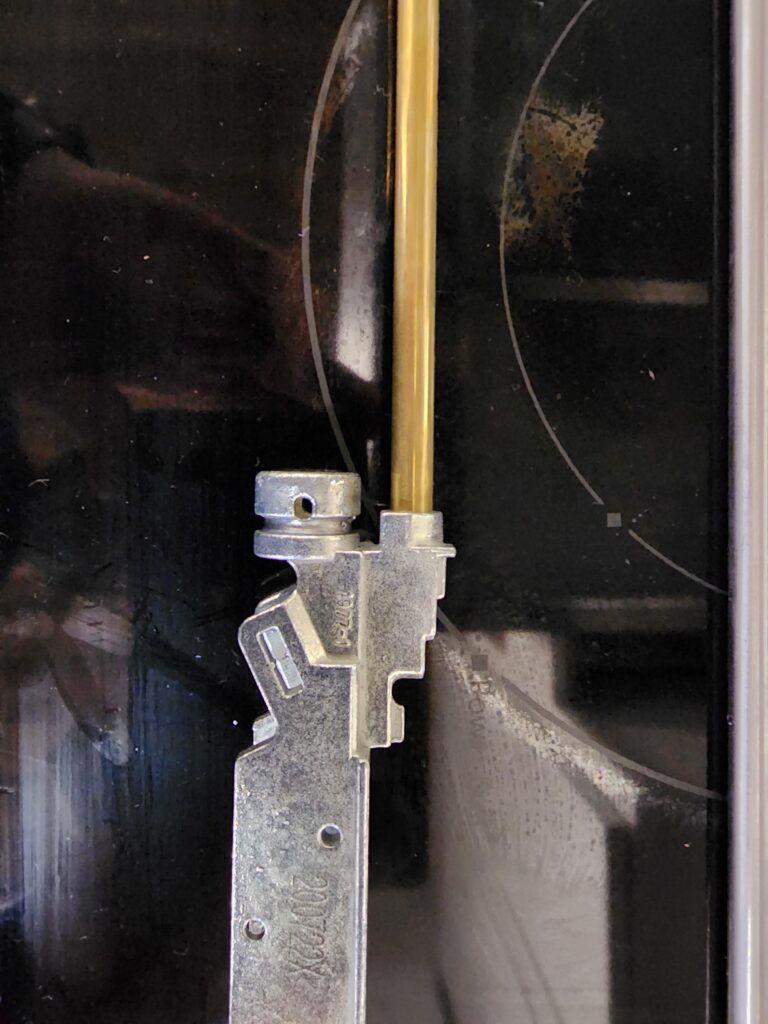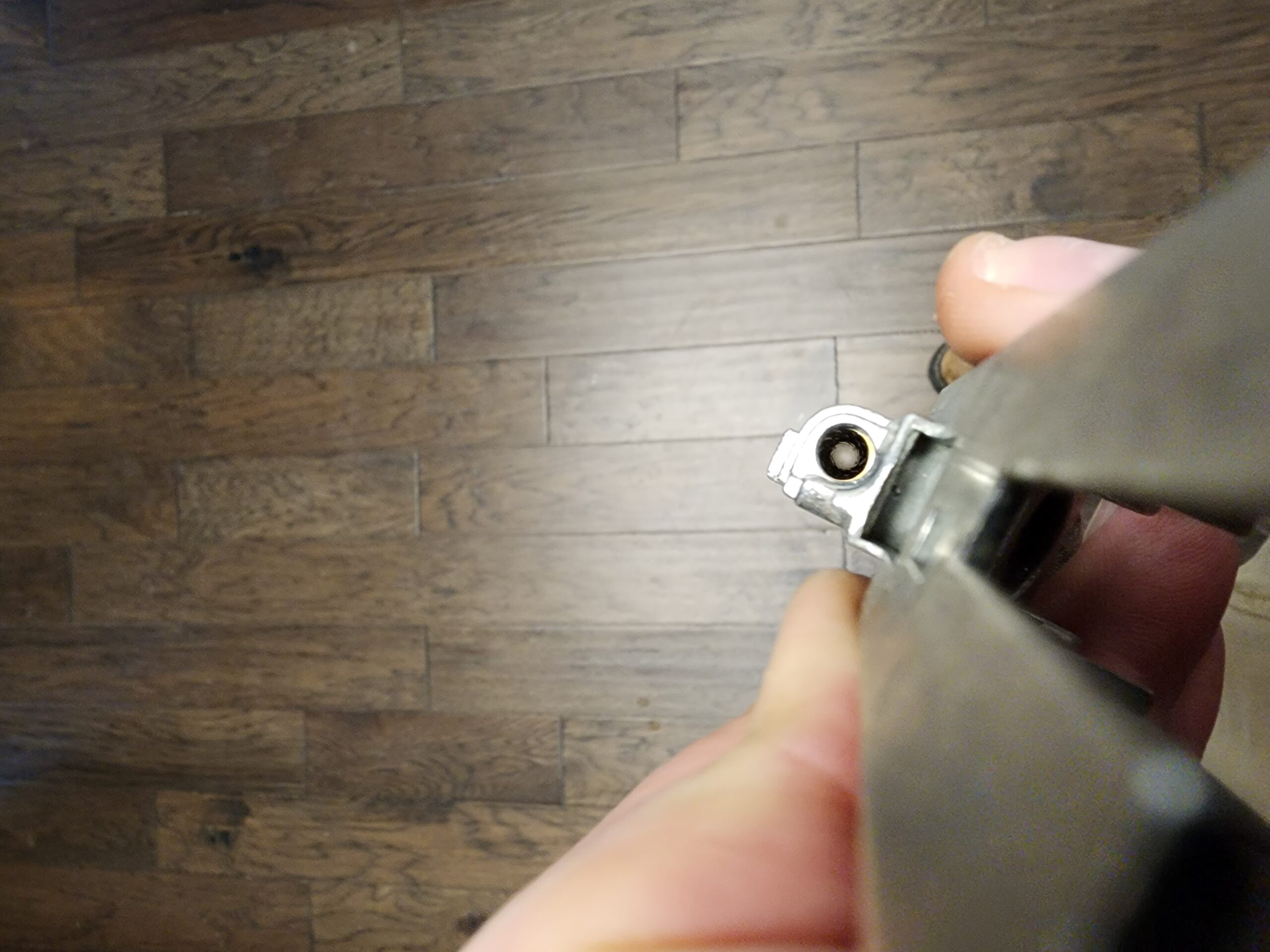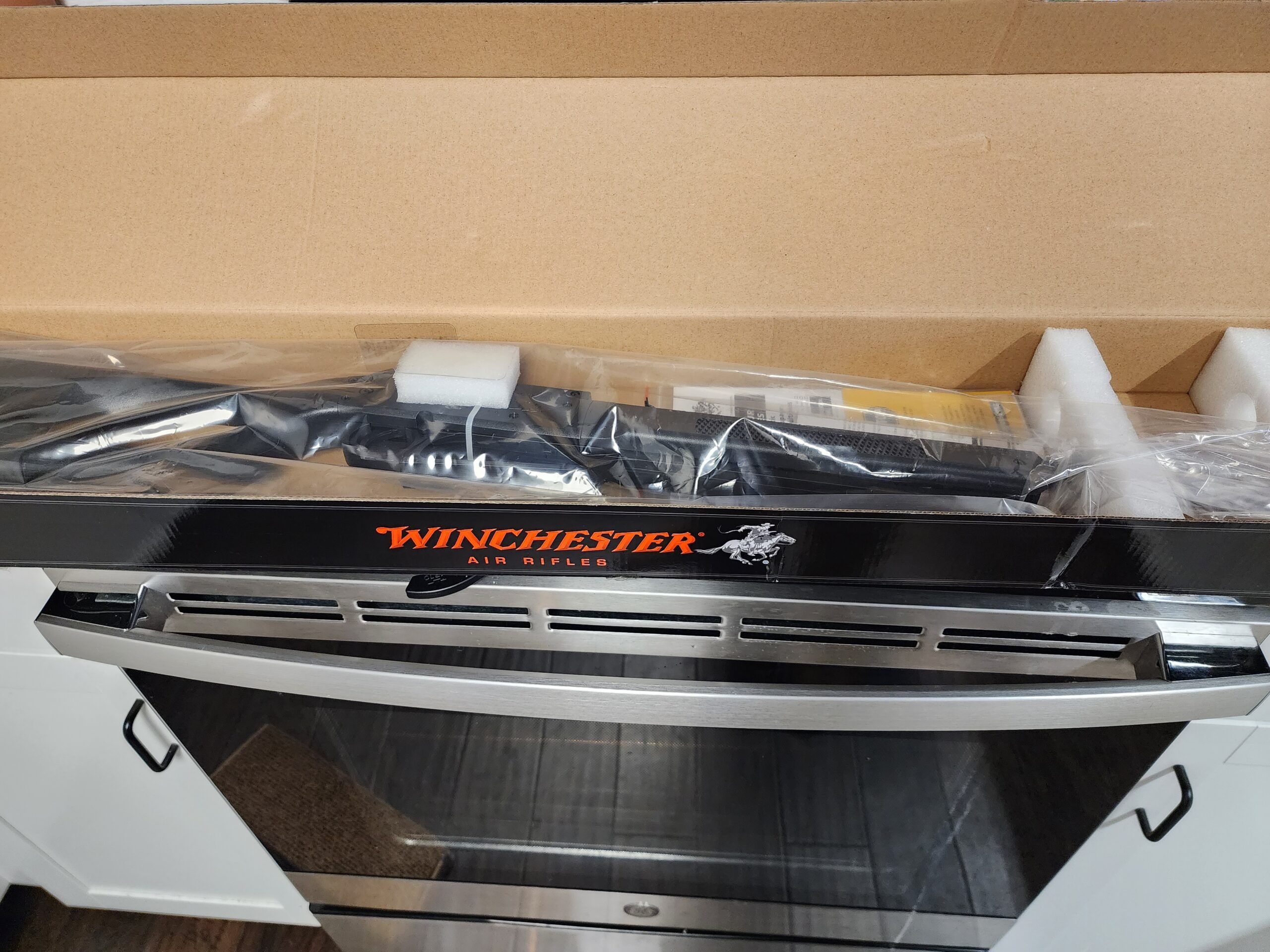About this modification
The Winchester 1977 is made by Daisy Outdoor Products. It is a variation of the Daisy Powerline 880. This modification is the same for the 1977 or 880. The differences between the 1977 and 880 are as follows: the 1977 has a steel abutment washer, a slightly longer hammer spring (stiffer trigger), a higher compression piston head, longer stroke, longer frame, longer barrel shroud, and longer pump arm with different pivot pin location. The fire control group (FCG) is interchangeable with the 880 except the hammer spring. The valve body (VB) is slightly thicker in the compression chamber area and marked 1977 in the casting. The receiver halves are interchangeable with equivalent model 880s. The butt stocks are also interchangeable. The forearms on the 1977 are longer than the 800 and are not interchangeable.

Model 1977
The 1977 is significantly more powerful than the 880. I have yet to find a 177 caliber diabolo pellet that resulted in a decrease in foot-pounds-of-energy (FPE) when shot from the 1977. It stands to reason that increasing the caliber and available pellet weights along with the larger diameter efficiency will result in more power from the 1977. I replace the factory abutment pin with oil hardened drill rod so that I can more reliably over pump the gun.
Creating this modification
To start this modification a replacement barrel must be located. I happened to have a barrel from a Daisy Powerline 922. The 922 was made from 1978 to 1989 and it's design changed over time. Guns made on or after March 1985 should have the pressed in barrel that is interchangeable with the current 1977 and 880. These barrels are very difficult to locate and it would be a same to remove one from a 922 that is capable of being restored. Another source for a 22 caliber barrel is from a Daisy powerline 822, 22X, or 22sg with the pressed in barrel. I also think it would not be the best idea to remove a barrel from one of these guns due to their collectable status and wood stocks. The best aftermarket option I have found is the FX STX barrel liner. The FX liner in 22 caliber has an outer diameter very close to the stock barrel. The FX liner will need to be cut off the same length as the factory barrel. Some sanding or slight turning may be required to get the barrel to fit in the VB. Be sure to cut the barrel excess off from the breach end of the barrel. Others have modified different barrels such as Crossman barrels to fit the breach, but I have not attempted that. I will be modifying a FX 25 cal. barrel for a 1977 in the future.

Once a barrel has been selected the factory barrel must be removed from the VB. Disassemble the gun to remove the barrel and VB assembly. To remove the factory barrel use a heat gun to heat the VB at the barrel interface. Using a piece of wood or rubber mallet firmly strike the VB on the compression port hole while holding the barrel in the vertical position. The VB should drop from the barrel so have something soft for it to land on. If the VB does not separate repeat the process.

The next step is to enlarge the loading port to allow 22 pellets to pass through. Using a 0.23" diameter drill bit drill from the barrel side of the VB through to the loading port. Stop once the tip of the bit is visible through the breach. Use of a vice and drill press is advisable to help insure concentricity. Insert the new barrel in the VB. Looking through the loading port verify the barrel is fully seated in the VB. There is a step in the VB just past the transfer port hole when looking through the VB loading port. The barrel should be flush with the step. Once the barrel is completely inserted seal the barrel to the VB. Now you can reassemble the gun. The bolt probe will seal in the breach as it is from the factory. You now have a "1922". The gun in the images here produced 25 FPE at 20 pumps using JSB Monster pellets (25.39 grn). I would advise replacing the factory abutment pin with drill rod while the gun is apart. Here's a link to the original build thread.

